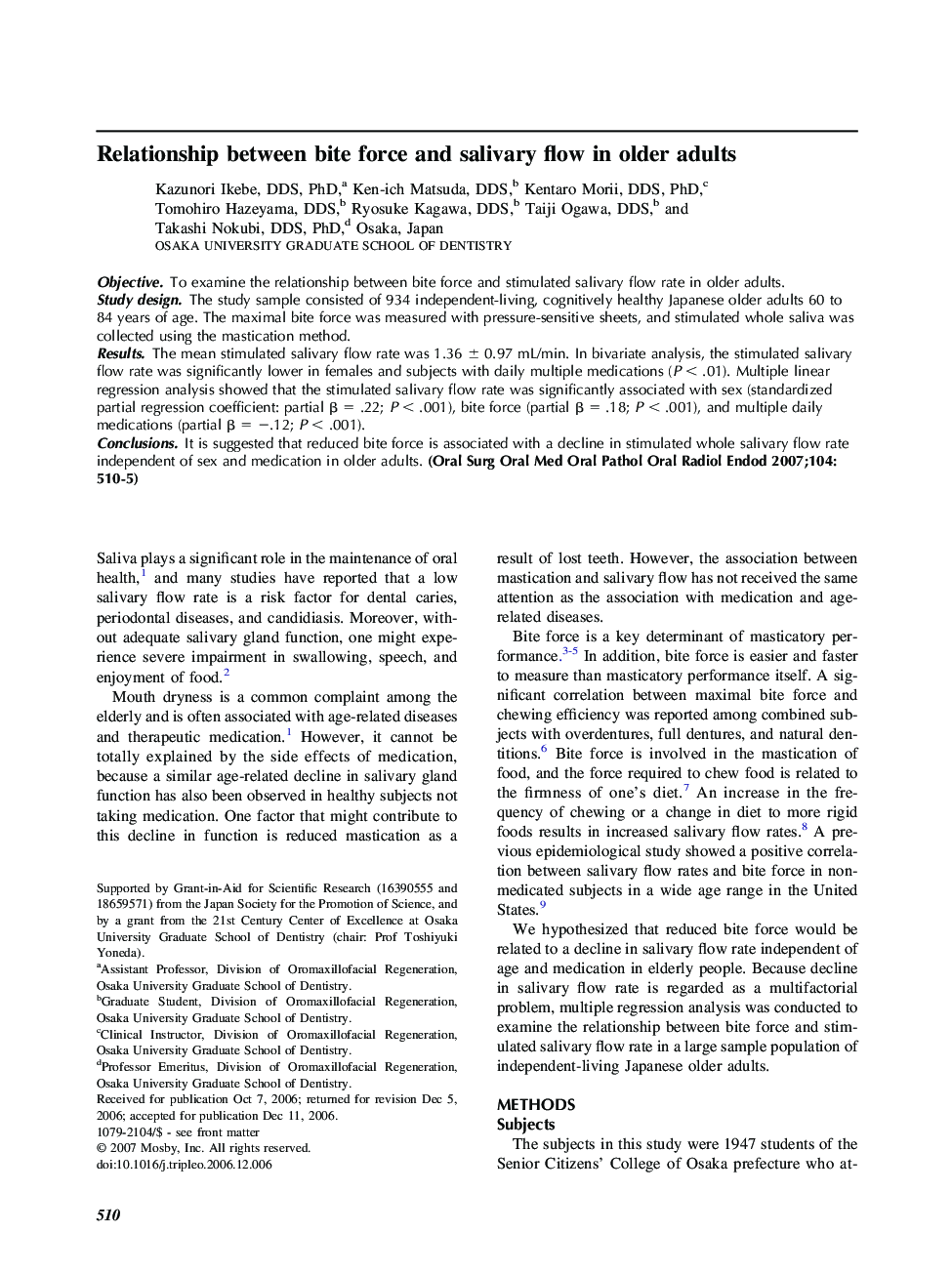| Article ID | Journal | Published Year | Pages | File Type |
|---|---|---|---|---|
| 3169290 | Oral Surgery, Oral Medicine, Oral Pathology, Oral Radiology, and Endodontology | 2007 | 6 Pages |
ObjectiveTo examine the relationship between bite force and stimulated salivary flow rate in older adults.Study designThe study sample consisted of 934 independent-living, cognitively healthy Japanese older adults 60 to 84 years of age. The maximal bite force was measured with pressure-sensitive sheets, and stimulated whole saliva was collected using the mastication method.ResultsThe mean stimulated salivary flow rate was 1.36 ± 0.97 mL/min. In bivariate analysis, the stimulated salivary flow rate was significantly lower in females and subjects with daily multiple medications (P < .01). Multiple linear regression analysis showed that the stimulated salivary flow rate was significantly associated with sex (standardized partial regression coefficient: partial β = .22; P < .001), bite force (partial β = .18; P < .001), and multiple daily medications (partial β = −.12; P < .001).ConclusionsIt is suggested that reduced bite force is associated with a decline in stimulated whole salivary flow rate independent of sex and medication in older adults.
